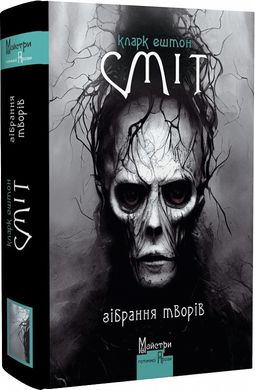|
Quantity
|
Out of stock
|
||
|
|
|||
Clark Ashton Smith (1893–1961) was an American poet, author of stories in the genres of horror and bizarre fiction, sculptor and painter.
In the first half of the 1930s, he was one of the most active contributors to the cult literary magazine "Weird Tales". Along with Howard Phillips Lovecraft and Robert Irwin Howard, Smith is one of the greatest writers of 20th-century American fantasy fiction, influencing the development of science fiction and horror as we know them today. Smith expanded the Cthulhu Mythos universe to include several ancient deities, including a Great Old One named Tsatoggua, as well as the Book of Eibon grimoire and the Pnom Scrolls treatise, and his friendship and correspondence with Lovecraft enriched the work of both writers.
Clark Ashton Smith is a master of words, who had a great knack for creating fantastical worlds full of ancient deities, magic, death, wonders and adventures, and like no one else, he was able to unfold before the reader the vague immensities of cosmic spaces and the gloomy visions of the dark recesses of the known world. Earth The writer has a unique picturesque style and a surprisingly rich figurative language, which makes his works an outstanding phenomenon in the literature of the 20th century.
Clark Ashton Smith's works had a significant influence on a number of his contemporaries, including August Derleth, Donald Vandry, Edgar Hoffman Price, Fritz Leiber, Catherine Lucille Moore, Jack Vance, and some members of a younger generation of readers such as Ray Bradbury and Harlan Allison, were inspired to take up fiction writing and become fiction writers.
The plot lines, locations and characters of some of Smith's stories have become part of the world of the cult board role-playing game "Dungeons and Dragons", and the aesthetics of his texts, paintings and sculptures inspire the creativity of modern musicians and artists.
Throughout his life, Clark Ashton Smith considered poetry to be his vocation, and this love of artistic imagery is well felt even in his prose works. And although they did not bring the author widespread recognition in his lifetime, they nevertheless became a source of inspiration for many contemporaries and followers. And therefore, with his work, Smith fulfilled his own saying: "A true poet is not a creation of an era, he creates his own era."
Here is how Howard Phillips Lovecraft, in a letter to Smith dated December 3, 1929, commented on his "The Story of Satampra Zeiros":
"... what an atmosphere! I see, I feel, I smell the scents of those jungles around the ancient Commorium, which even now, I am quite sure, must lie buried beneath the glacial ice near the Plateau in the land of Lomar! I am convinced that it was this heart of primeval terror that the mad Arab Abdul Alhazred was thinking of when he—even he! — left something unnamed and marked only by rows of stars in the surviving manuscript of his accursed and forbidden Necronomicon!”
The collection of works by Clark Ashton Smith contains selected short stories of the author, published for the first time in Ukrainian, and should introduce readers to part of his unique literary output.

